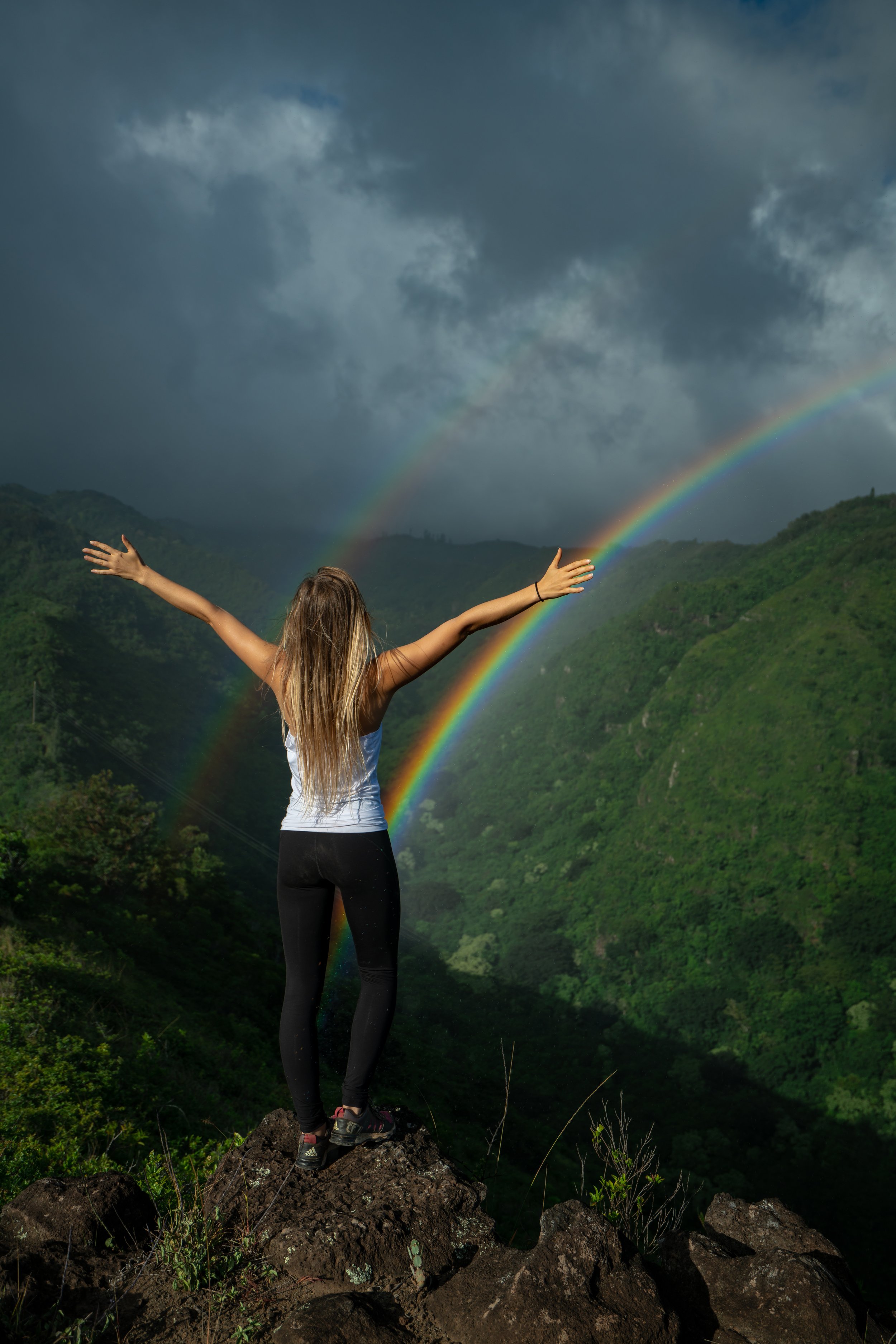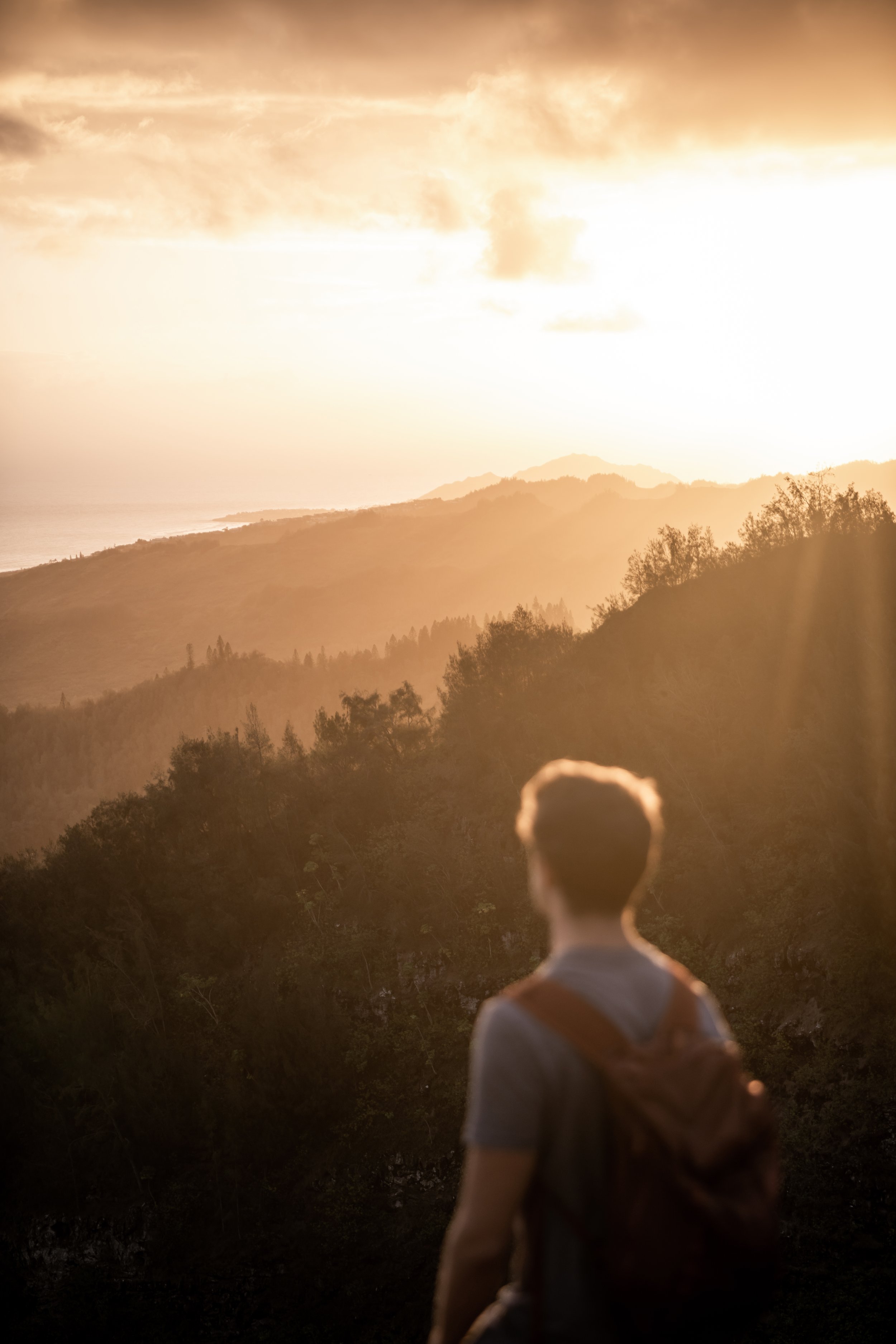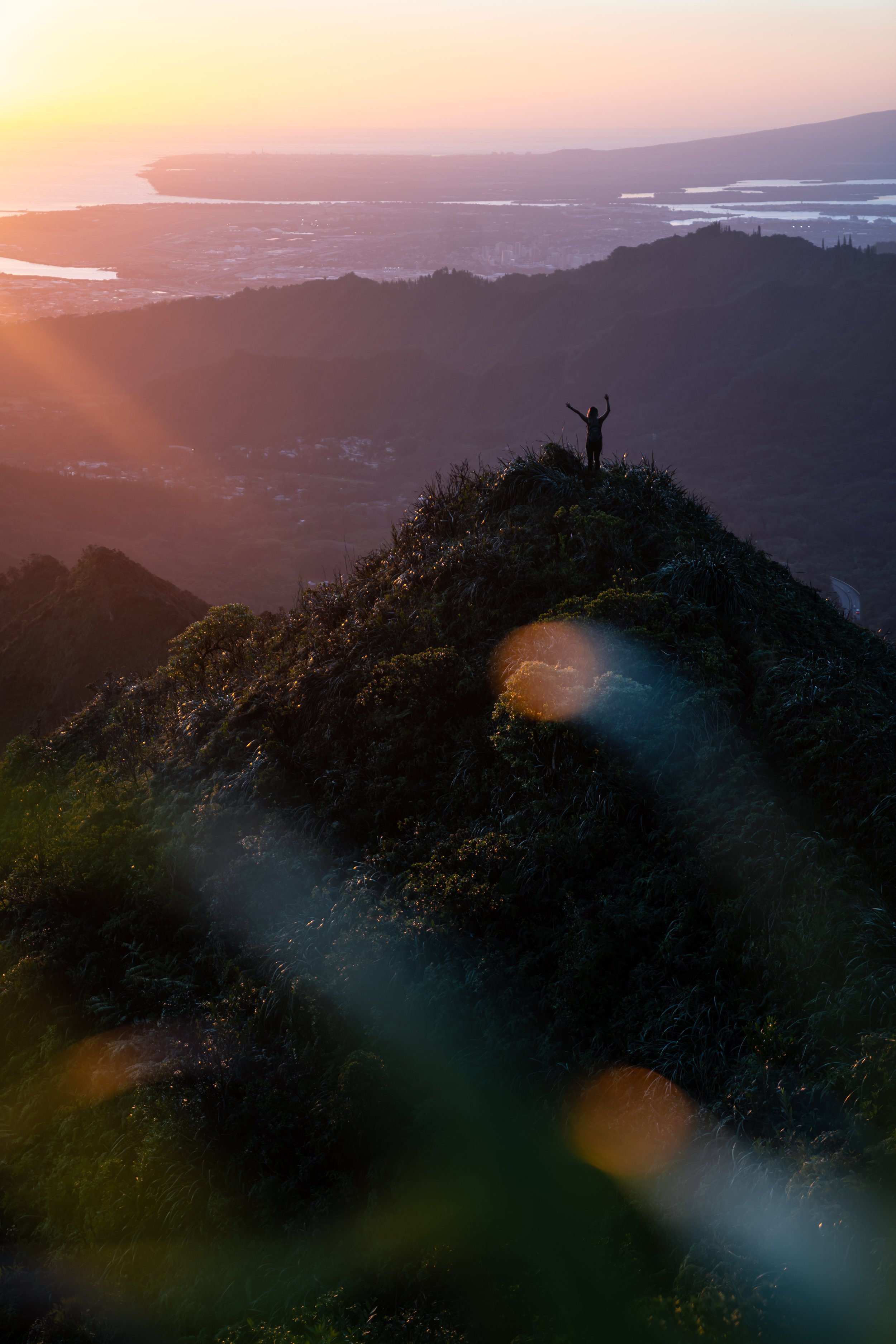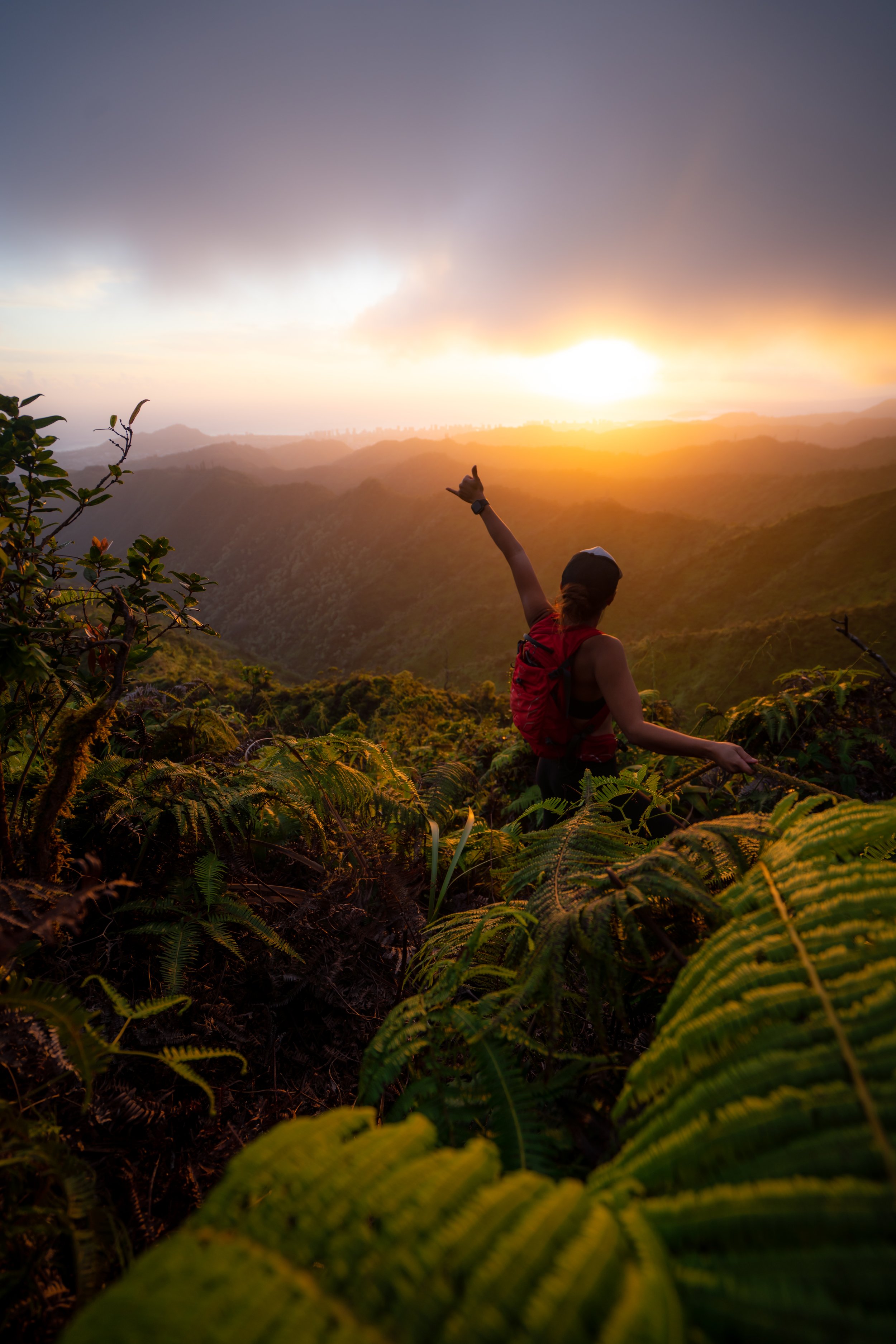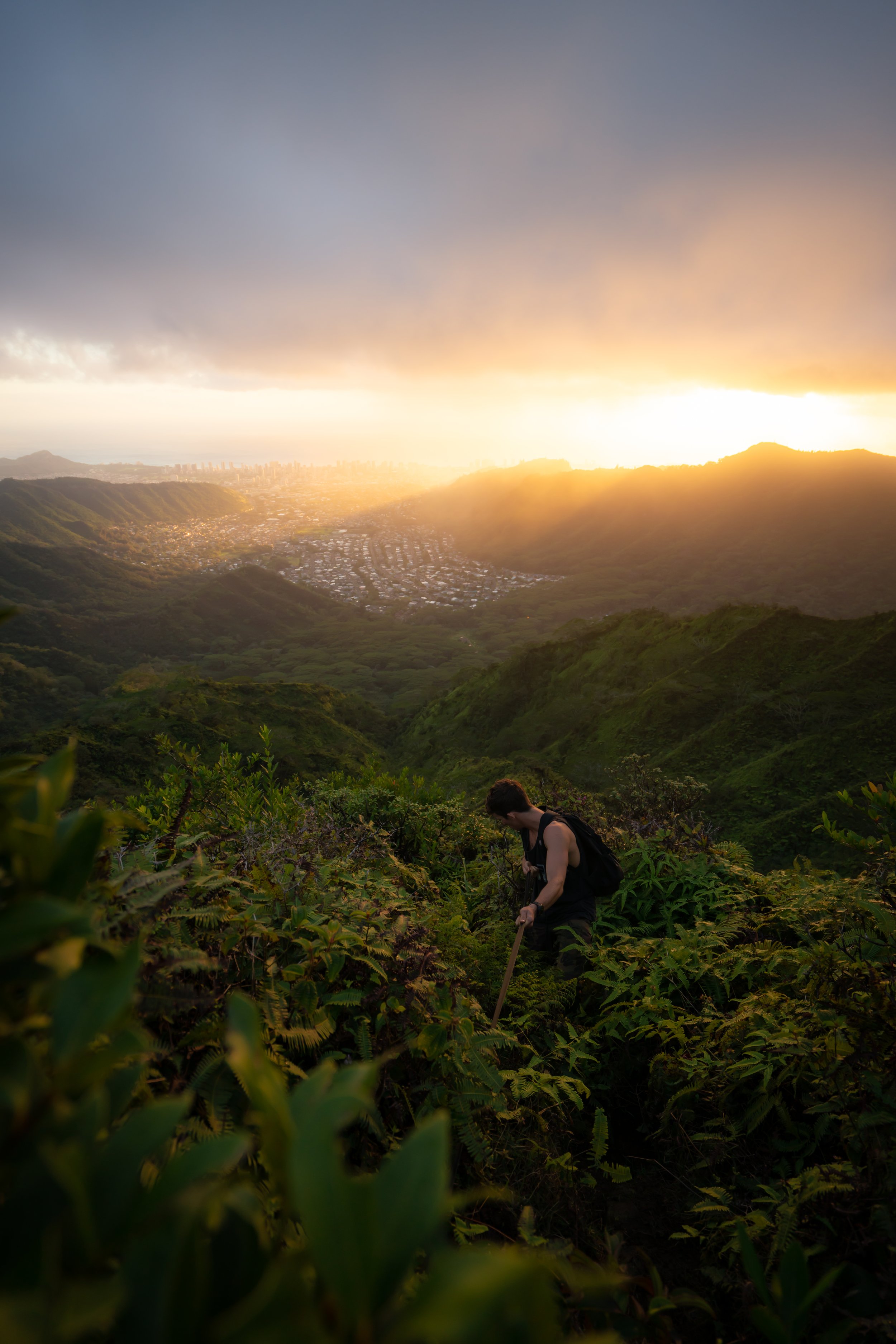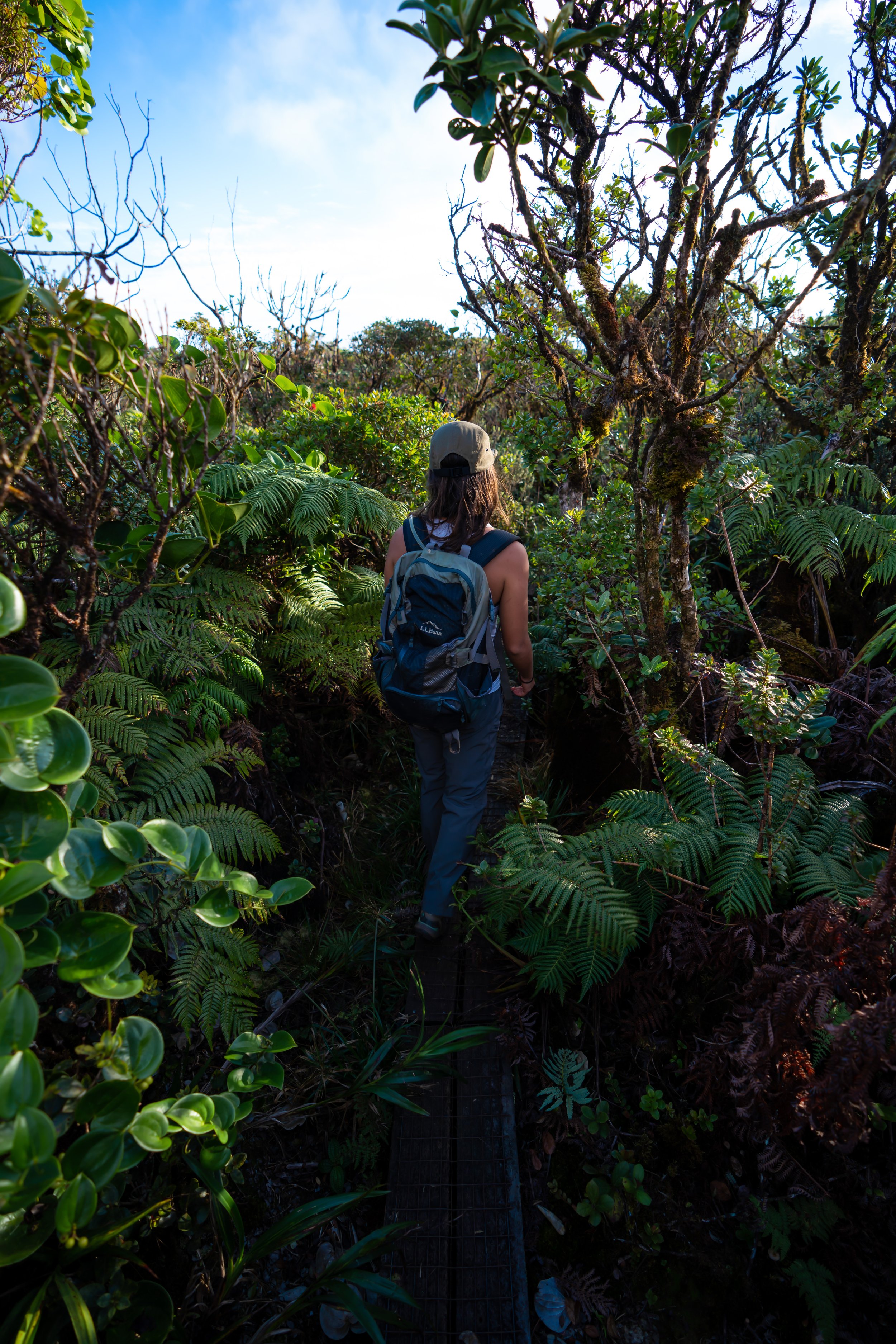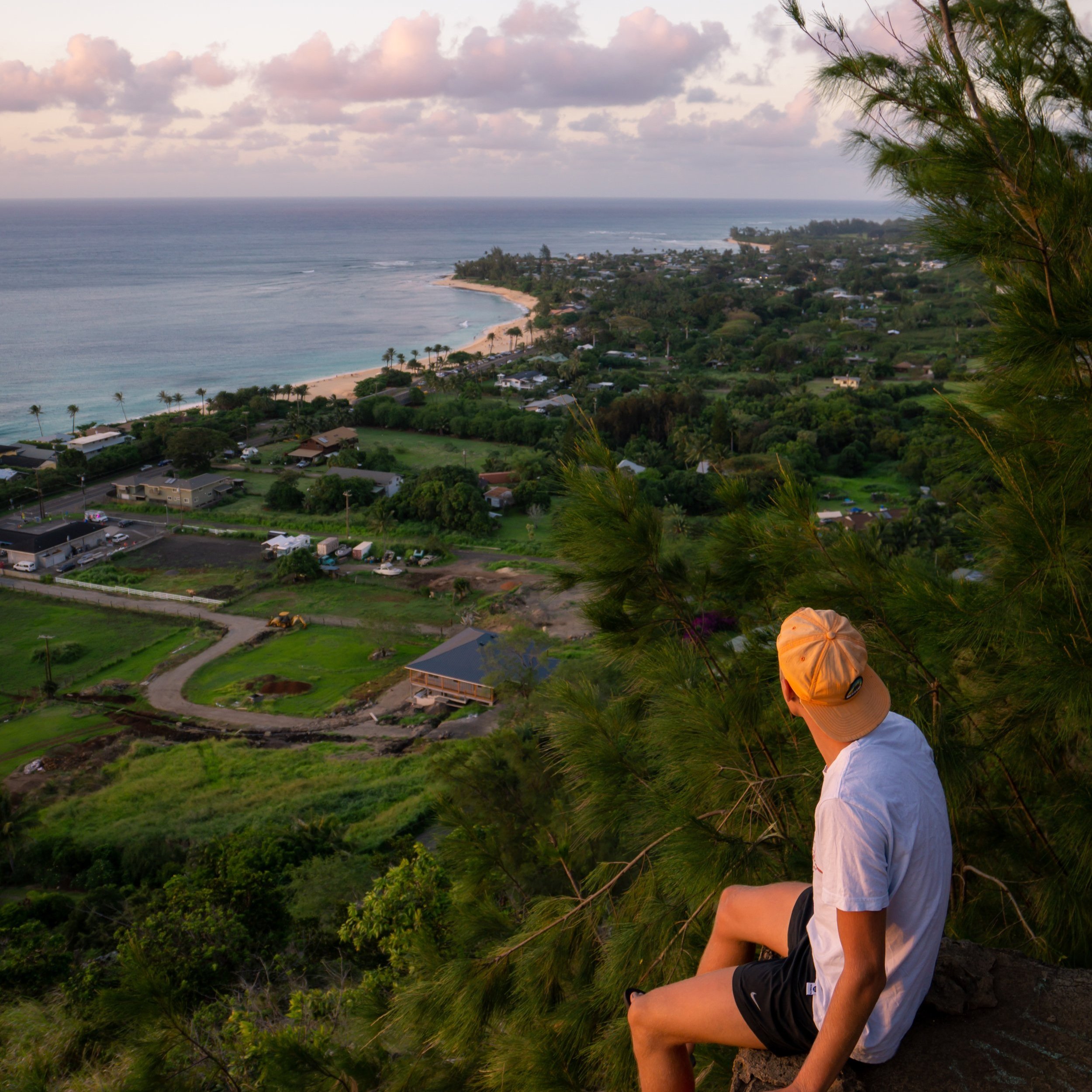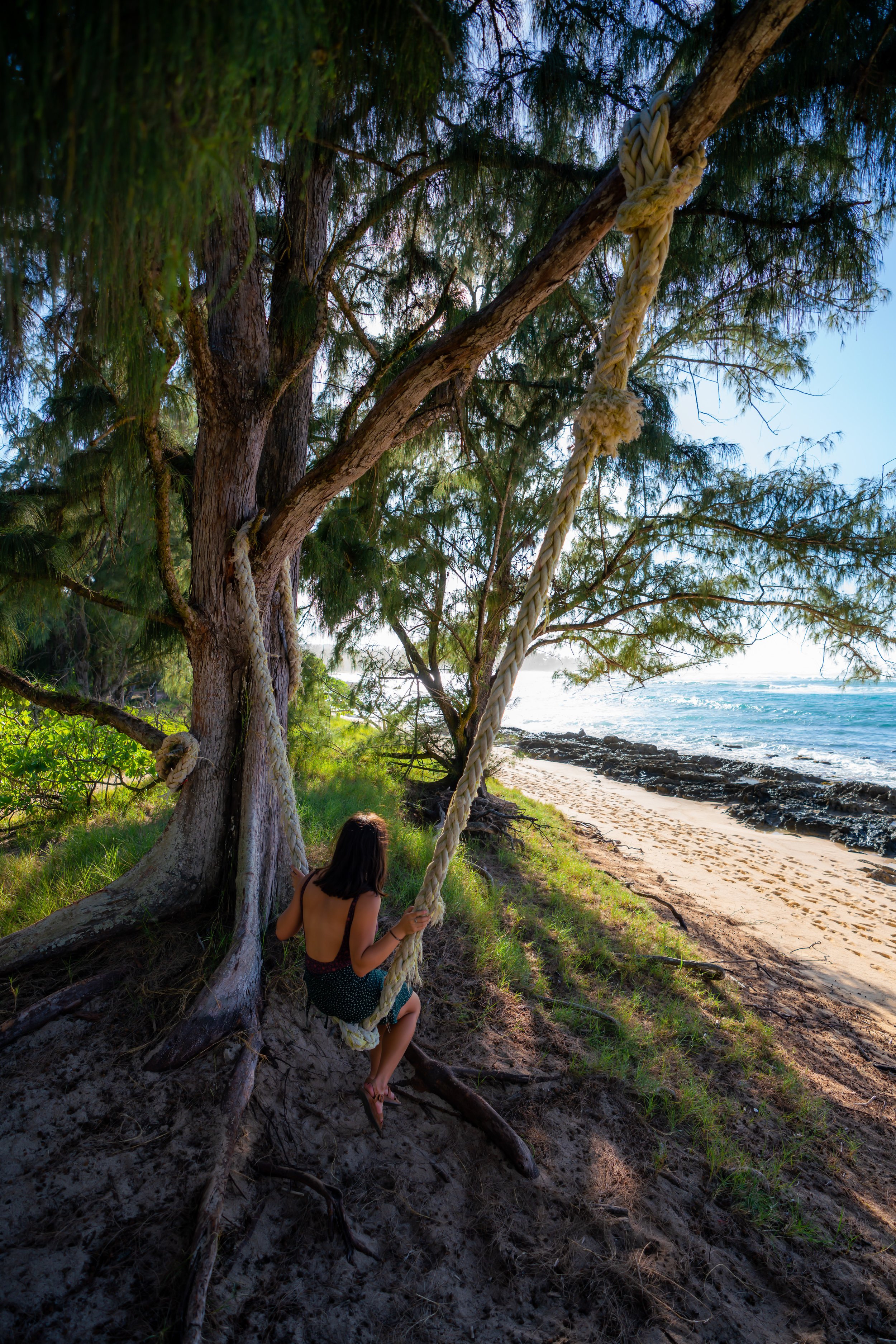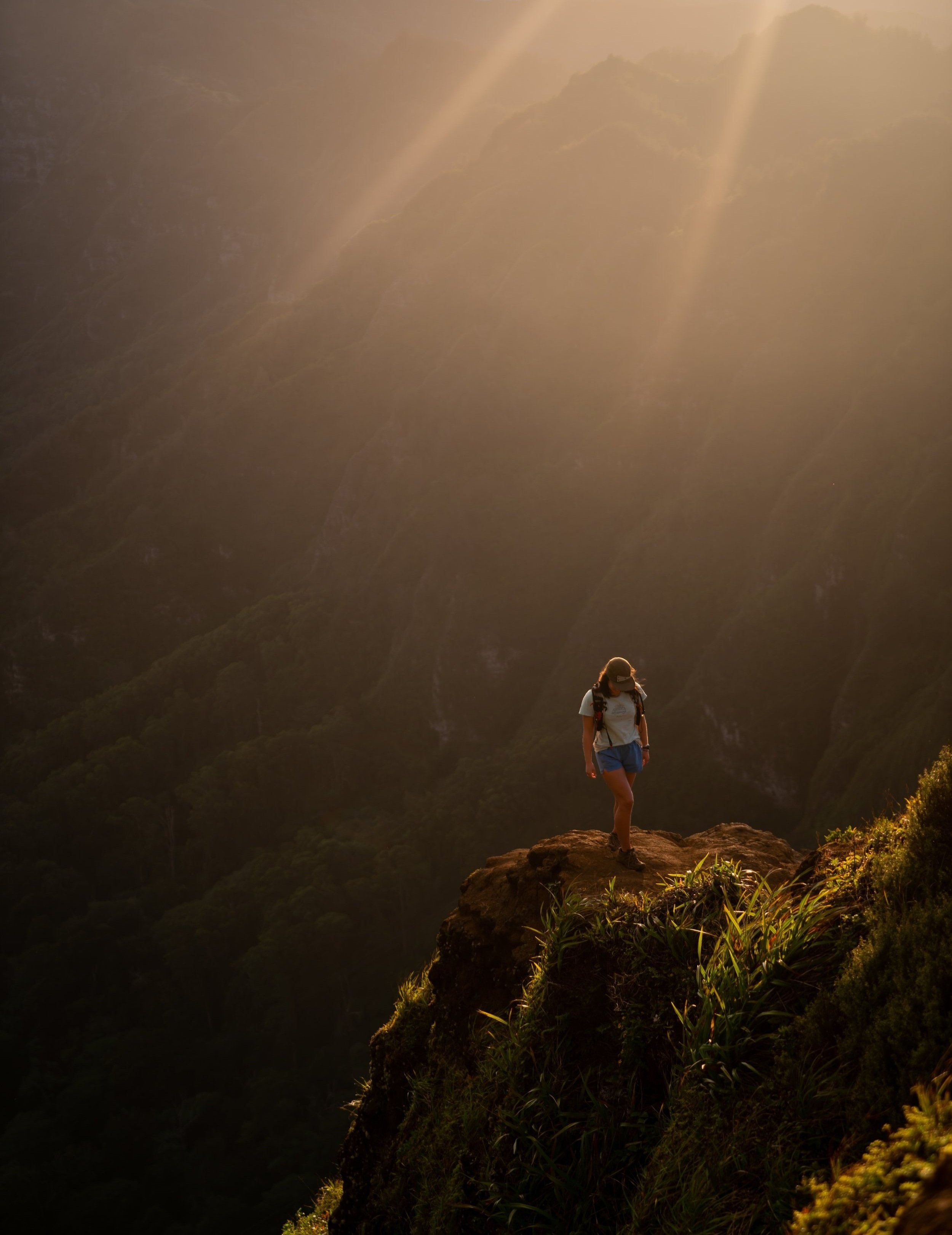Hiking the Tripler Ridge Trail on Oʻahu, Hawaiʻi
Distance (Tripler AMC): 9.0 miles / 14.5 km
Distance (Moanalua Valley): 8.8 miles / 14.2 km
The Tripler Ridge Trail, historically called the Kauākaulani Ridge Trail, in the southern Koʻolau Mountains on Oʻahu is one of the island’s least-trafficked day hikes—especially when compared to the neighboring Moanalua Middle Ridge Trail.
That said, Tripler Ridge is considered by many to be one of the more challenging ridge hikes up to the Koʻolau Summit, comparable to others on the island, such as ʻAiea Ridge and Kapālama Ridge, with the difficulty largely influenced by the trailhead in which you choose to begin.
By this, I mean that the Triple Ridge Trail can either begin from the trailhead behind Tripler Army Medical Center, or at the Moanalua Valley Trailhead, which is the much more popular option.
I say this because a Military/ DOD ID is required to begin from Tripler Army Medical Center, but the Moanalua Valley Trail is open to the public.
Given these options, I prefer to begin from the trailhead behind Tripler Hospital because it cuts out about 900 ft. (274 m) of steep hiking from the valley floor to the ridge. However, this is obviously a luxury if you have, or know someone who has, base access.
Tripler Ridge Trailhead Parking
Depending on where you choose to begin, parking for the Tripler Ridge Trail is either located in the very back of Moanalua Valley, just before Moanalua Valley Neighborhood Park, or off Reasoner Road in Rainbow Village, behind Tripler Army Medical Center.
Note that if you decide to begin from Moanalua Valley, you are required to park in the residential neighborhood just before the gate. Parking within Moanalua Valley Neighborhood Park is not allowed for day hikers.
Google Maps Directions: Tripler Ridge Trailhead / Moanalua Valley Trailhead
Hiking the Tripler Ridge Trail
This is the Tripler Ridge Trail, beginning from Rainbow Village off Reasoner Road.
I ask that if you are fortunate enough to have DOD access and begin from this trailhead, you please be quiet and respectful.
All too often, trails in Hawaiʻi draw too much negative attention because people just don’t understand this.
To begin reading about Tripler Ridge from the Moanalua Valley Trailhead, click here.
After just 0.1 miles (0.2 km), turn left to continue up the Access Road leading to the start of the trail.
It’s always nice to see a few native plants—like this ʻĀkia—in an area otherwise dominated by invasive species at these lower elevations.
Tripler Ridge Trailhead
After 1.1 miles (1.8 km) of walking, the paved Access Road ends, and the Tripler Ridge Trail begins.
Here, stay to the right of the building to begin the Tripler Ridge Trail.
At first, the Tripler Ridge Trail passes by several power lines, which can be a bit overgrown, before the true trail begins about 0.25 miles (0.4 km) away.
This is where the Tripler Ridge Trail begins past the power lines.
These Cook Pine trees are always a nice sign that you’re not too far from Tripler Ridge Access Road on the hike back down.
After roughly 0.8 miles (1.3 km) from the upper trailhead, the Koʻolau Summit and the rest of Tripler Ridge become visible for the first time.
It is here that the hills on Tripler Ridge become more distinguishable, with the story truly being that all the elevation gain is at the end!
Yes, there is only about 450 ft. (137 m) of net elevation change between the Upper Tripler Ridge Trailhead and the last mile of the hike, meaning that the final stretch to the top is fairly steep!
When the trail reaches this large erosion scar, it descends steeply down one of two different routes, which may or may not have a rope.
Either way, this section can be particularly slippery, whether it has rained recently or not.
Here’s another example of a Hawaiian native making its way through this dense, invasive Strawberry Guava forest.
Tripler Ridge-Moanalua Valley Junction
After 2.2 miles (3.5 km) from Rainbow Village, the Tripler Ridge Trail meets the Moanalua Valley Connector, which branches off Kamananui Valley Road at the 1.7-mile (2.7 km) mark.
This is where both routes to the KST become one.
If you plan to descend the Moanalua Valley–Tripler Ridge Connector, be sure to take a picture or make a mental note of this area so you don’t miss the turn on the hike back down—especially because all the sections through the Strawberry Guava can look the same!
As the Tripler Ridge Trail climbs higher, the dense Strawberry Guava begins to thin, giving way to Koa and ʻŌhiʻa as the miles pass.
Something that’s also apparent on these less-trafficked Oʻahu trails is that the overgrowth inevitably gets worse and worse the closer to the summit the trail gets. This is why I recommend wearing good hiking pants.
The pants below are my recommendations that hold up the best with the overgrowth here in Hawaiʻi, but with any hiking pants that need to be durable, make sure that they are at or near 100% nylon. This is really the most important factor!
On a clear day you can see Hālawa, Stairway to Heaven, Moanalua Middle, Tripler, and Puʻu Lanihuli from left to right.
Kōlea is definitely a favorite of mine, with this hybrid in particular being one to look out for, as it is not too common to stumble upon!
There’s always new landslides on these wet Hawaiʻi ridges!
This was such a perfect day to be in the mountains!
The one comment that usually comes out after finishing Tripler Ridge is how long of a hike it is compared to others on Oʻahu!
However, this is just a trend that seems to increase the further north you go, with ridges such as Kapālama, just to the south, being shorter than Tripler, and ridges further north, like Waimano, Mānana, and Schofield-Waikāne, all being longer than Tripler.
The only exception to this is Poamoho, due to the long Poamoho Hele Loa Access Road that makes getting fairly high up so easy!
Upper Tripler Ridge-Moanalua Valley Junction
The area shown below is the second and last trail that meets with Tripler Ridge from Moanalua Valley at the end of the Kamananui Valley Road.
That being said, deciding whether to hike out of Moanalua Valley at the 1.7-mile (2.7 km) mark or the end of Kamananui Valley Road depends entirely on how you prefer to distribute the elevation gain.
By taking the first route up, about 900 ft. (274 m) must be climbed in just 0.4 miles (0.6 km), or by taking the second route up, about 620 ft. (189 m) must be climbed in the same distance.
However, keep in mind that after reaching this upper junction, the elevation gain from here to the summit is nearly constant, meaning there are essentially no breaks from the valley floor to the KST when starting at the end of the road.
This is where the steepest elevation gain on Tripler Ridge truly begins.
With that in mind, much of the hike up the Tripler Ridge Trail traverses countless rolling hills, leaving the vast majority of the elevation gain on the Access Road at the very beginning and these steep sections at the end of the hike.
That said, the Tripler Ridge Trail climbs roughly 1,100 ft. (335 m) over the course of the last 1.0 mile (1.6 km), with only one good flat spot on the way up to take a break.
There is so much Kōlea diversity to see in just this one hike!
This is the best spot, up the steep final sections, to take a break before reaching the summit!
It’s always great to see one of Oʻahu’s three endemic ʻŌhiʻa species.
Yes, Oʻahu has the most ʻŌhiʻa diversity of any island in Hawaiʻi, meaning that four out of the five total species can be seen when hiking across Oʻahu, with three of those four native only to Oʻahu!
As Tripler Ridge nears the summit, the trail traverses a very short, washed-out section along the left-hand side of the ridge before gaining the ridgeline shortly thereafter.
The power lines that can be seen in the photo below are a good visual indicator of how much farther there is to hike before reaching the top, as both sit right on the crest of the Koʻolau Summit.
When the weather is clear, Moanalua Middle can be seen very clearly on these upper sections.
Kahoʻomoe ʻihikapulani (Tripler Summit)
From the summit of Kahoʻomoe ʻihikapulani, more commonly known as Tripler Summit, you can see amazing views across much of Oʻahu’s east side, including notable places like Mt. Olomana, Puʻu Māʻeliʻeli, Mokoliʻi, and the Lanikai Pillboxes.
It’s a very popular option to hike north on the 0.4-mile (0.6 km) section of the Koʻolau Summit Trail (KST) to the Moanalua Middle Summit, but I want to caution against exploring the KST if you didn’t prepare for it.
By this, I mean that any hike along the KST is generally considered to be more difficult than the ridges to get there, which is why I recommend turning back down Tripler Ridge if you had not prepared for the sections to come.
Read My Separate Post: Koʻolau Summit Trail (KST)
Warning
Since Bowman to the south is a less-than-ideal access trail for the Koʻolau Summit, I wanted to make a mention of the Kalihi Saddle, as Tripler Ridge is more than likely the access trail of choice for those interested in hiking the north side of Kalihi from the top down.
All I can say is that the Kalihi Saddle is not meant for 99.9% of hikers. The Koʻolau Summit down to the Power Line Trail is extremely eroded, it’s surrounded by areas where a fall would most certainly be fatal, and the ridge only continues to get worse and worse as more hikers attempt to complete the entire trail.
Seriously, stay safe out there! I have lived through the worst possible outcome, regarding a close friend of mine.
Read My Separate Post: Koʻolau Summit Trail (KST)
Hiking the Tripler Ridge Trail via Moanalua Valley
The Tripler Ridge Trail, via Moanalua Valley, begins on the Moanalua Valley Trail for the first 1.7 miles (2.7 km), where the ascent up Tripler Ridge begins.
On this note, there is more than one trail to ascend Tripler Ridge via Moanalua Valley, most notably the junction at the very end of Kamananui Valley Road past Kulanaʻahane. However, I personally prefer the 1.7-mile (2.7 km) mark connector because the latter is more overgrown and compresses more of the elevation gain into a shorter distance.
This is all without saying that I recommend hiking the Tripler Ridge Trail with a good headlamp because it is one of the longer and more challenging day hikes on Oʻahu.
Kamananui Valley Road
As the Moanalua Valley Trail follows the Moanalua Stream, know that it’s generally easiest to stay on the high path whenever the trail splits to avoid unnecessary ups and downs.
The photo below is one of the first bridges that you will encounter in Moanalua Valley, which is easiest to stay on the left-hand side.
Moanlua Valley-Tripler Ridge Junction
This is the Tripler Ridge junction at the 1.7-mile (2.7 km) mark.
As previously mentioned, the trail ascending the ridge is very steep, gaining about 900 ft. (274 m) of elevation gain in only 0.4 miles (0.6 km), which is very comparable to the Koko Crater ascent.
If you are interested in reading about the trails further up Moanalua Valley, check out my separate posts linked below.
Read My Separate Posts: Moanalua Middle Ridge Trail / Kulanaʻahane Trail
Tripler Ridge-Moanalua Valley Junction
This is where the connector trail from Moanalua Valley crests on the top of Tripler Ridge.
That being said, the trail to the right of this junction leads toward the Triple Army Medical Center, and the trail to the left continues up Tripler Ridge for another 2.3 miles (3.7 km) to reach the Koʻolau Summit.
To skip back to this same junction up above, click here.
Native Plants on the Tripler Ridge Trail
The Moanalua Valley Trail is not the best trail for finding native Hawaiian plants other than Hau and Māmaki. However, Tripler Ridge to the Koʻolau Summit is one of the more beautiful Hawaiian forests, especially on the upper elevations of the hike!
Some of these include various species of ʻŌhiʻa lehua, ʻAhakea lau nui, Kōpiko, Koa, Uluhe, Kōlea, Kokolau, Kāpana, ʻIliahi, and Loulu, to truly only name a few.
If you would like to learn more about these and many other native Hawaiian plants from across the islands, I encourage you to check out my separate post linked below.
Read My Separate Post: Native Hawaiian Plant Guide



